
Austria, Germany, and Switzerland: Castles, Culture & Captivating Nature
 12 Day Tour of Vienna, Salzburg, Heidelberg and Lucerne
12 Day Tour of Vienna, Salzburg, Heidelberg and Lucerne
Overview
Trip Map
Itinerary
Inclusions
Reviews







12 Days 11 Nights
Best Time: Jan-Dec
Nature Lovers
Castle & Palace Tours
See charming towns, dramatic castles, and stunning landscapes on this remarkable journey through the heart of Europe. This itinerary takes you from Vienna’s imperial splendor to Salzburg’s Baroque treasures, and then from Heidelberg’s old town to Lucerne’s elegant lakeside historic center. You’ll see some of Europe’s most storied palaces and castles, visiting Schönbrunn Palace, Neuschwanstein Castle, and Heidelberg Castle. Wander picturesque old towns, savor Swiss chocolates, and marvel at the Swiss Alps from Mount Pilatus. With detailed travel guidance via our mobile app, Go Real Travel ensures a seamless, enriching adventure.
- Explore Schönbrunn Palace’s opulent rooms and vast gardens in Vienna.
- Cruise the Danube River’s most scenic valley and an enchanting lake in the Bavarian Alps.
- Discover Heidelberg Castle’s atmospheric ruins and stunning views over its Altstadt.
- Experience the world’s steepest cog-wheel train ride up Mount Pilatus and be amazed by the views.
- Enjoy a private guided tour of Lucerne, including the Lion Monument and Chapel Bridge.
See charming towns, dramatic castles, and stunning landscapes on this remarkable journey through the heart of Europe. This itinerary takes you from Vienna’s imperial splendor to Salzburg’s Baroque treasures, and then from Heidelberg’s old town to Lucerne’s elegant lakeside historic center. You’ll see some of Europe’s most storied palaces and castles, visiting Schönbrunn Palace, Neuschwanstein Castle, and Heidelberg Castle. Wander picturesque old towns, savor Swiss chocolates, and marvel at the Swiss Alps from Mount Pilatus. With detailed travel guidance via our mobile app, Go Real Travel ensures a seamless, enriching adventure.
- Explore Schönbrunn Palace’s opulent rooms and vast gardens in Vienna.
- Cruise the Danube River’s most scenic valley and an enchanting lake in the Bavarian Alps.
- Discover Heidelberg Castle’s atmospheric ruins and stunning views over its Altstadt.
- Experience the world’s steepest cog-wheel train ride up Mount Pilatus and be amazed by the views.
- Enjoy a private guided tour of Lucerne, including the Lion Monument and Chapel Bridge.

Hofburg Palace
Castles & Chateaux

St Stephen’s Cathedral
Churches & Monasteries

Schönbrunn Palace & Zoo
Parks & Gardens

Hohensalzburg Fortress
Castles & Chateaux

Old Town
Architecture

Heidelberg Castle
Castles & Chateaux

Church of the Holy Spirit
Churches & Monasteries

Lake Lucerne
Natural Beauty

Old Town
Historic Landmarks
Must see sights

Hofburg Palace
Castles & Chateaux

St Stephen’s Cathedral
Churches & Monasteries

Schönbrunn Palace & Zoo
Parks & Gardens

Hohensalzburg Fortress
Castles & Chateaux

Old Town
Architecture

Heidelberg Castle
Castles & Chateaux

Church of the Holy Spirit
Churches & Monasteries

Lake Lucerne
Natural Beauty

Old Town
Historic Landmarks
Starting from
$2675
per person
 Not included
Not included Secure Your Customizable Trip
Enter your details to embark on a journey that can be tailored just for you.
Start
Travelers
0 travelers
Add Room
Remove Room
Preferred Hotel Stars
Select Hotel Stars
Craft Your Own Itinerary
Select your interests and destinations for a trip plan inspired by you.
Austria, Germany & Switzerland Trip - Map & Itinerary
Enable/Disable Map Scrolling
Click To Make Map Interactive

Austria, Germany & Switzerland Trip Timeline
 Edit Details
Edit DetailsArrival
3 nights
Vienna
Austria
Train: 2.5h
3 nights
Salzburg
Austria
Train: 5h
2 nights
Heidelberg
Germany
Train: 0.5h
Train: 2.5h
Train: 1.5h
3 nights
Lucerne
Switzerland
Departure
Day-By-Day Itinerary of Austria, Germany & Switzerland Trip

Day 1
Arrive Vienna
Day 1
Arrive Vienna



To Be Determined
Taxi Transfer to Hotel
Vienna has one main airport, Vienna International Airport, where almost all visitors arrive. Taxis are available directly at the terminal exit, or you can arrange a private transfer for added convenience. Uber is also available to those who have the app.

Day 1
Arrive Vienna


Day 1
Arrive Vienna




To Be Determined:
Taxi Transfer to Hotel
Mid-Day/Afternoon:
Ring Street
Late Afternoon/Early Evening:
Inner City


Day 2
Vienna
Day 2
Vienna



9:00 AM - 11:30 AM
Guided Walk of the Inner City
This tour takes you back in history to explore the Vienna that stood within the old city walls. You will learn about the humble beginnings of Vienna before it became the capital of a great empire and one of the most important cities in Europe. You will discover how Vienna's early inhabitants lived and how they left their mark on the city and its beautiful Medieval, Renaissance, and Baroque architecture.

Day 2
Vienna



Day 3
Vienna
Day 3
Vienna


Early Morning to Early Evening
Wachau Valley
A one-and-a-half-hour train ride from Vienna brings you to the town of Melk, where you can tour the vast Melk Abbey. From there you can begin a 22-mile cruise through the Wachau Valley, considered the most beautiful stretch of the entire Danube River. You'll pass medieval castle ruins, hills covered in vineyards, and several charming villages, where you can debark to try some wine or take a hike up to a castle. The valley is also a perfect destination for cyclers and winery tours.

Dürnstein
Explore the twisting narrow lanes of this delightful monastery town.
Show More

Dürnstein Castle Ruins
Hike to the dramatic ruins of a medieval castle built in 1100's.
Show More

Melk Abbey
Tour a huge and splendid Baroque monastery.
Show More

Spitz
Stop to taste the wine in a postcard-pretty town surrounded by vineyards.
Show More

Dürnstein
Explore the twisting narrow lanes of this delightful monastery town.
Show More

Dürnstein Castle Ruins
Hike to the dramatic ruins of a medieval castle built in 1100's.
Show More

Melk Abbey
Tour a huge and splendid Baroque monastery.
Show More

Spitz
Stop to taste the wine in a postcard-pretty town surrounded by vineyards.
Show More
prev
next

Day 3
Vienna

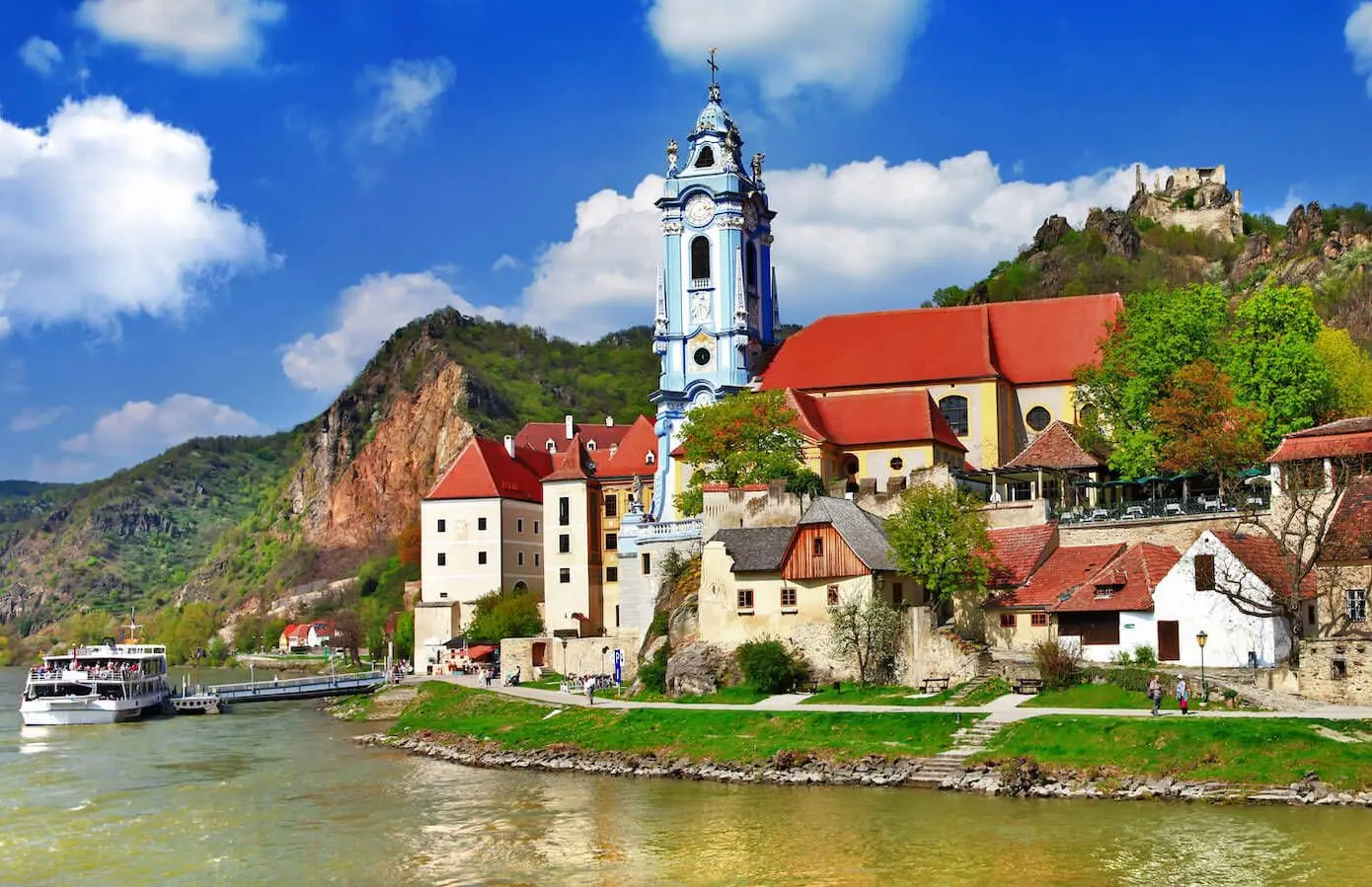
Dürnstein
 Highlight of Wachau Valley
Highlight of Wachau ValleyExplore the twisting narrow lanes of this delightful monastery town.
Named for the castle that overlooks it, Dürnstein is probably the most-visited stop in the Wachau valley. Reached by an ancient tunnel leading from the boat docks, it is well-known for its wine as well as the beautiful blue church tower of its Augustinian monastery.
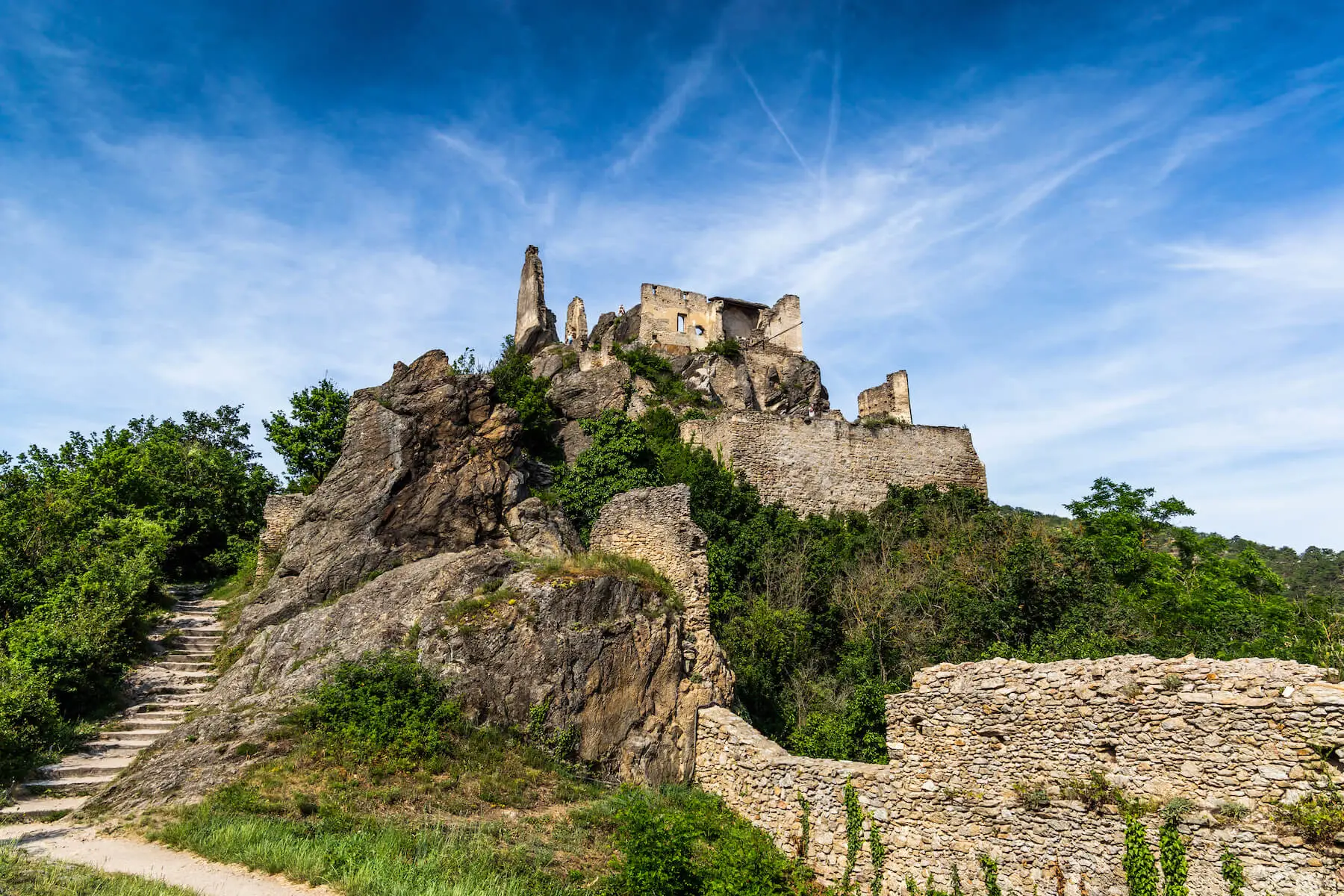
Dürnstein Castle Ruins
 Highlight of Wachau Valley
Highlight of Wachau ValleyHike to the dramatic ruins of a medieval castle built in 1100's.
The hike leading to the castle is steep, but the amazing view you are rewarded with makes it all worth while. The fascinating ruins are extensive and can be freely explored. The castle was made famous by its most illustrious prisoner, King Richard the Lionhearted of England, who was held there for ransom.
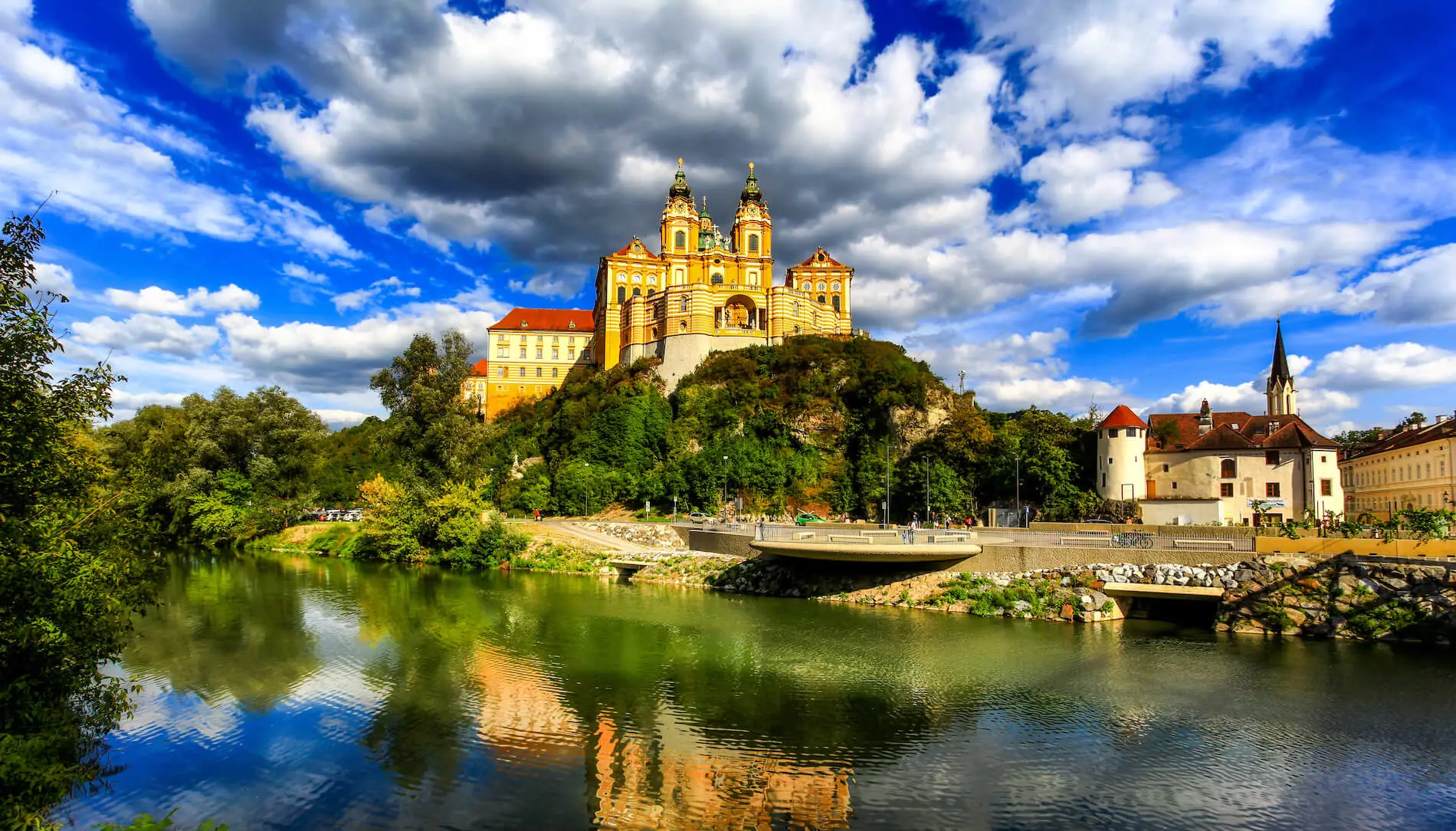
Melk Abbey
 Highlight of Wachau Valley
Highlight of Wachau ValleyTour a huge and splendid Baroque monastery.
Founded in 1089 when the Austrian duke gave one of his castles to Benedictine monks, Melk Abbey is now both a place of pilgrimage and a major tourist attraction. Visitors come for the museum of religious artifacts, the jaw-dropping library, and the sublime church. The town square below the abbey is also a great place for a meal or wine.
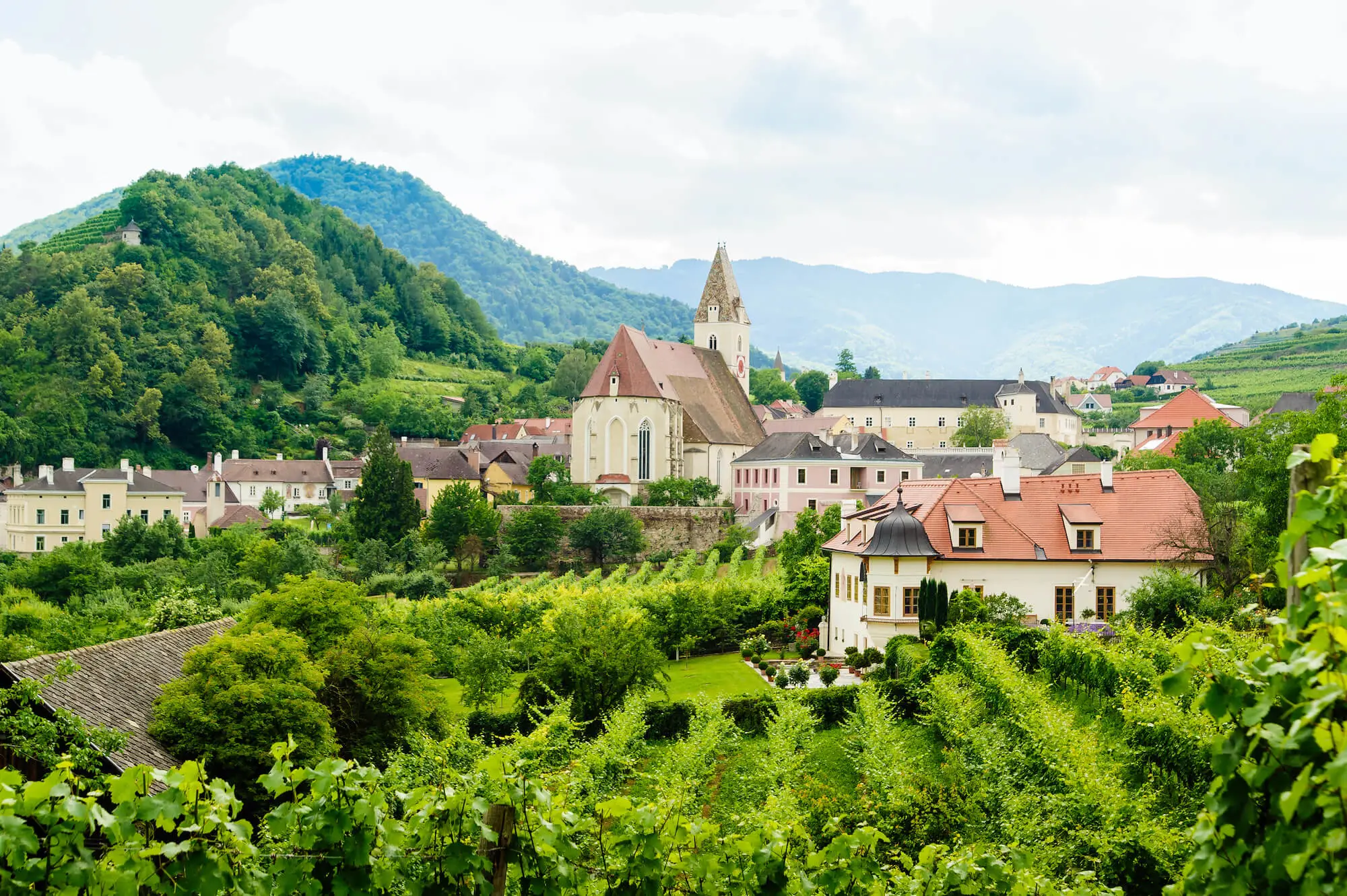
Spitz
 Highlight of Wachau Valley
Highlight of Wachau ValleyStop to taste the wine in a postcard-pretty town surrounded by vineyards.
Spitz is a favorite stop due to its bucolic atmosphere and abundance of wine taverns and restaurants. It is also home to the Tausendeimerberg or "House of a Thousand Buckets" (so named for the abundance of wine fields) and the castle ruins of Hinterhaus, which make for a nice (if steep) hike from the village.

Dürnstein
 Highlight of Wachau Valley
Highlight of Wachau ValleyExplore the twisting narrow lanes of this delightful monastery town.
Named for the castle that overlooks it, Dürnstein is probably the most-visited stop in the Wachau valley. Reached by an ancient tunnel leading from the boat docks, it is well-known for its wine as well as the beautiful blue church tower of its Augustinian monastery.

Dürnstein Castle Ruins
 Highlight of Wachau Valley
Highlight of Wachau ValleyHike to the dramatic ruins of a medieval castle built in 1100's.
The hike leading to the castle is steep, but the amazing view you are rewarded with makes it all worth while. The fascinating ruins are extensive and can be freely explored. The castle was made famous by its most illustrious prisoner, King Richard the Lionhearted of England, who was held there for ransom.

Melk Abbey
 Highlight of Wachau Valley
Highlight of Wachau ValleyTour a huge and splendid Baroque monastery.
Founded in 1089 when the Austrian duke gave one of his castles to Benedictine monks, Melk Abbey is now both a place of pilgrimage and a major tourist attraction. Visitors come for the museum of religious artifacts, the jaw-dropping library, and the sublime church. The town square below the abbey is also a great place for a meal or wine.

Spitz
 Highlight of Wachau Valley
Highlight of Wachau ValleyStop to taste the wine in a postcard-pretty town surrounded by vineyards.
Spitz is a favorite stop due to its bucolic atmosphere and abundance of wine taverns and restaurants. It is also home to the Tausendeimerberg or "House of a Thousand Buckets" (so named for the abundance of wine fields) and the castle ruins of Hinterhaus, which make for a nice (if steep) hike from the village.
prev
next

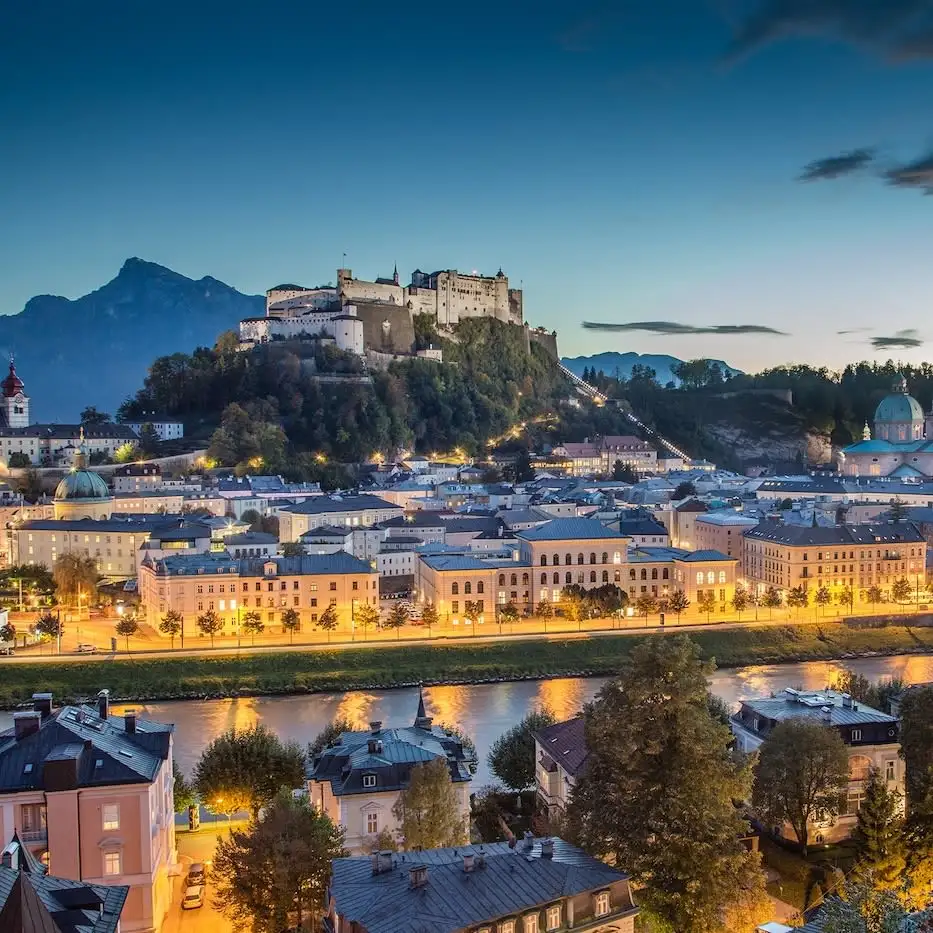
Day 4
Vienna to Salzburg
Day 4
Vienna to Salzburg





10:40 AM
Taxi Transfer to Rail Station
Your hotel front desk will also be happy to arrange a taxi pick up for you. Vienna taxis are generally reliable and honest, so this is cheaper than a pre-arranged transfer. Your itinerary will provide more information on ordering a taxi, as well as detailed information on navigating the train station and finding your train, making the whole process simple and stress-free.

Day 4
Vienna to Salzburg


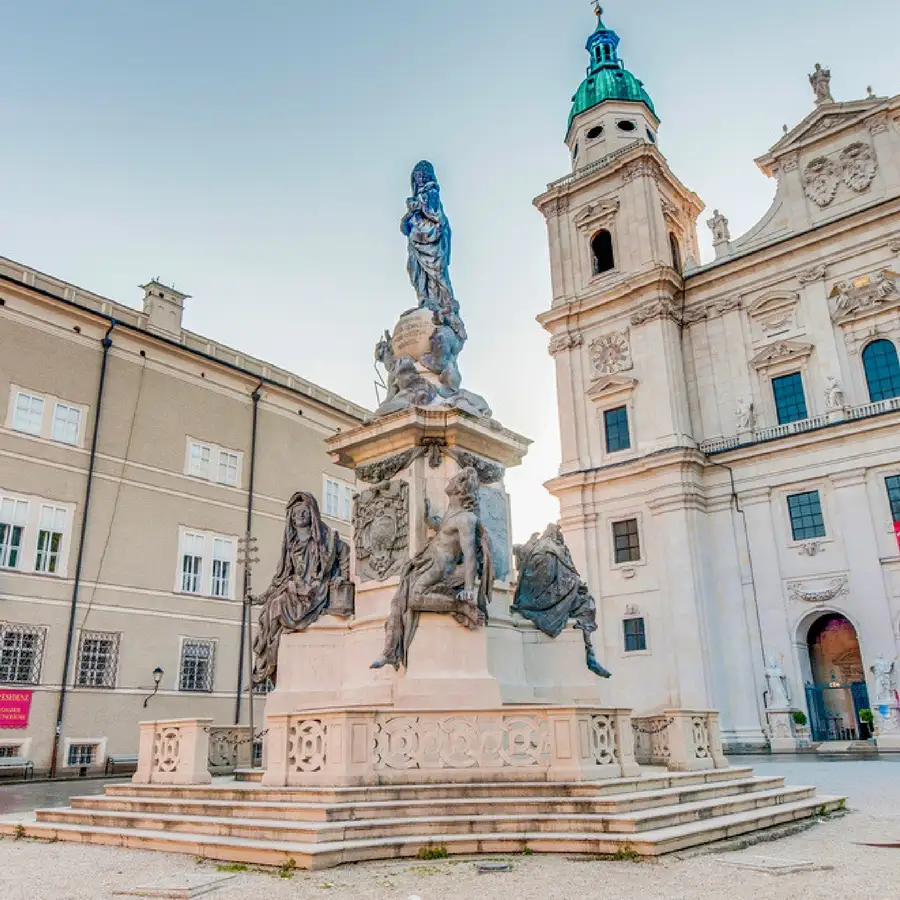
Day 5
Salzburg
Day 5
Salzburg



9:00 AM - 11:30 AM
Guided Walking Tour of Salzburg
Salzburg is simply overwhelming in all the best ways. It is alive with fascinating history, grandiose and sublime architecture fills every street and square, culture and music permeate the atmosphere, and it is surrounded by breath-taking natural scenery. This guided tour with a local will provide the context needed to bring all of this beauty into perspective, and to connect the physical city to its history, culture, and environment.

Mozartplatz
One of several grand squares in the center of Altstadt in Salzburg.
Show More

Salzburg Cathedral
Visit Salzburg's largest and most impressive church.
Show More

Mozartplatz
One of several grand squares in the center of Altstadt in Salzburg.
Show More

Salzburg Cathedral
Visit Salzburg's largest and most impressive church.
Show More

Mozartplatz
One of several grand squares in the center of Altstadt in Salzburg.
Show More

Salzburg Cathedral
Visit Salzburg's largest and most impressive church.
Show More
prev
next

Day 5
Salzburg

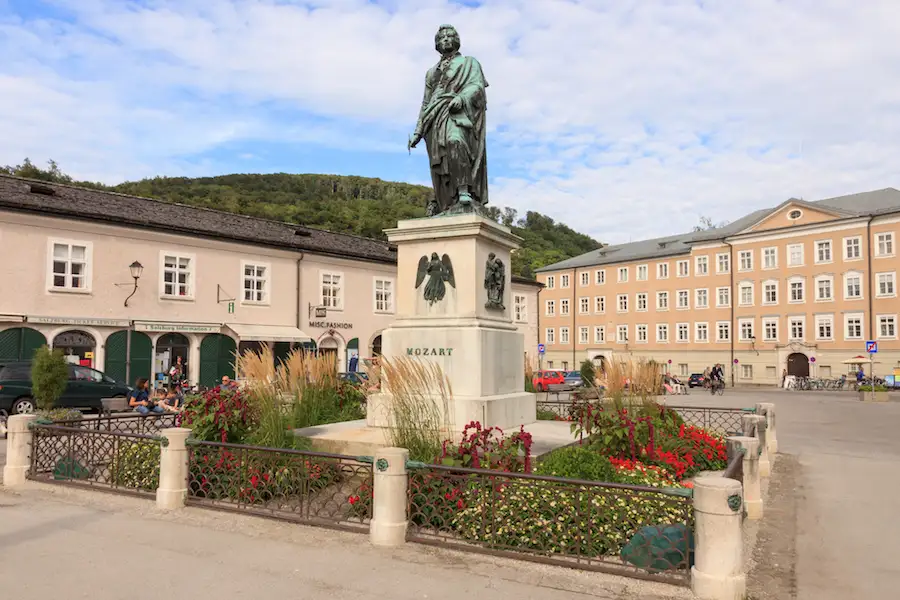
Mozartplatz
 Highlight of Guided Walking Tour of Salzburg
Highlight of Guided Walking Tour of SalzburgOne of several grand squares in the center of Altstadt in Salzburg.
One of several grand squares in the center of Altstadt in Salzburg. In the Mozartplatz you can find a statue of the famous composer.

Salzburg Cathedral
 Highlight of Guided Walking Tour of Salzburg
Highlight of Guided Walking Tour of SalzburgVisit Salzburg's largest and most impressive church.
The current cathedral was built between 1614-1628 and is a masterpiece of baroque architecture. The cathedral was largely destroyed by an Allied bomb in WWII but was restored by 1959. One of the most significant treasures in the cathedral is the Baptismal Font, which was cast in 1321 and rests on copper lions dating back to the 1100s.

Mozartplatz
 Highlight of Guided Walking Tour of Salzburg
Highlight of Guided Walking Tour of SalzburgOne of several grand squares in the center of Altstadt in Salzburg.
One of several grand squares in the center of Altstadt in Salzburg. In the Mozartplatz you can find a statue of the famous composer.

Salzburg Cathedral
 Highlight of Guided Walking Tour of Salzburg
Highlight of Guided Walking Tour of SalzburgVisit Salzburg's largest and most impressive church.
The current cathedral was built between 1614-1628 and is a masterpiece of baroque architecture. The cathedral was largely destroyed by an Allied bomb in WWII but was restored by 1959. One of the most significant treasures in the cathedral is the Baptismal Font, which was cast in 1321 and rests on copper lions dating back to the 1100s.

Mozartplatz
 Highlight of Guided Walking Tour of Salzburg
Highlight of Guided Walking Tour of SalzburgOne of several grand squares in the center of Altstadt in Salzburg.
One of several grand squares in the center of Altstadt in Salzburg. In the Mozartplatz you can find a statue of the famous composer.

Salzburg Cathedral
 Highlight of Guided Walking Tour of Salzburg
Highlight of Guided Walking Tour of SalzburgVisit Salzburg's largest and most impressive church.
The current cathedral was built between 1614-1628 and is a masterpiece of baroque architecture. The cathedral was largely destroyed by an Allied bomb in WWII but was restored by 1959. One of the most significant treasures in the cathedral is the Baptismal Font, which was cast in 1321 and rests on copper lions dating back to the 1100s.
prev
next

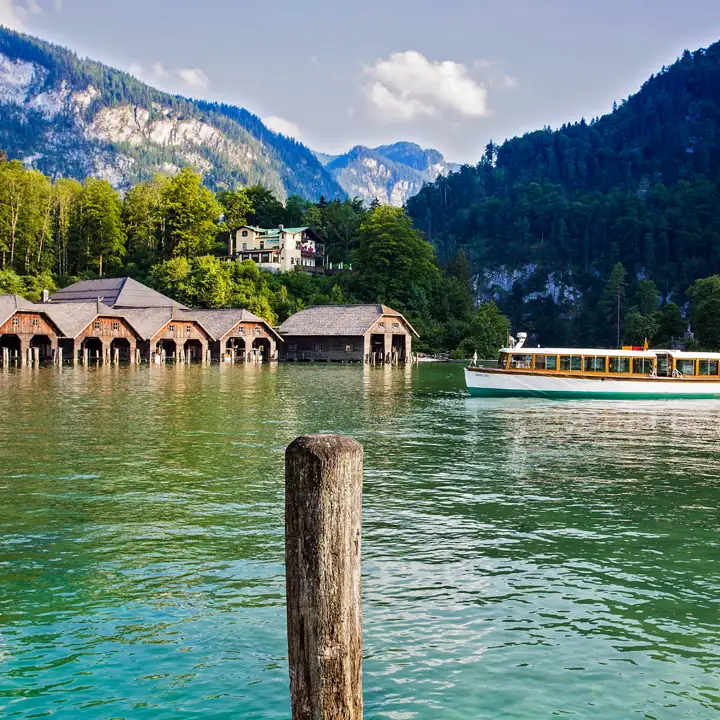
Day 6
Salzburg
Day 6
Salzburg


Morning
Königssee Lake
The breathtakingly beautiful Königssee (King's Lake) is the deepest lake in the Alps and is surrounded by steep mountains. Taking a cruise on the lake is an unforgettable experience. The boat will take you to the red-onion domed Kloster St. Bartolomä, where you then take a relaxing and enchanting walk along the forested lakeshore. For serious hikers, you can also continue on the boat to the far end of the lake, and then take a hike to a dramatic waterfall.

Obersee
Take a short hike to this stunning lake nestled within the mountains.
Show More

St Bartholomew's Church
Hop off the boat for a pleasant and easy walk along the lake shore near this onion-domed church.
Show More

Königssee Cruise
Relax on an unforgettable cruise across the lake, hopping on an off when you please.
Show More

Malerwinkl
Venture a little further to find a perfect view of the lake.
Show More

Jennerbahn Cable Car
Take an exhilarating ride into the Alpine peaks above the lake.
Show More

Obersee
Take a short hike to this stunning lake nestled within the mountains.
Show More

St Bartholomew's Church
Hop off the boat for a pleasant and easy walk along the lake shore near this onion-domed church.
Show More

Königssee Cruise
Relax on an unforgettable cruise across the lake, hopping on an off when you please.
Show More

Malerwinkl
Venture a little further to find a perfect view of the lake.
Show More

Jennerbahn Cable Car
Take an exhilarating ride into the Alpine peaks above the lake.
Show More

Obersee
Take a short hike to this stunning lake nestled within the mountains.
Show More
prev
next

Day 6
Salzburg

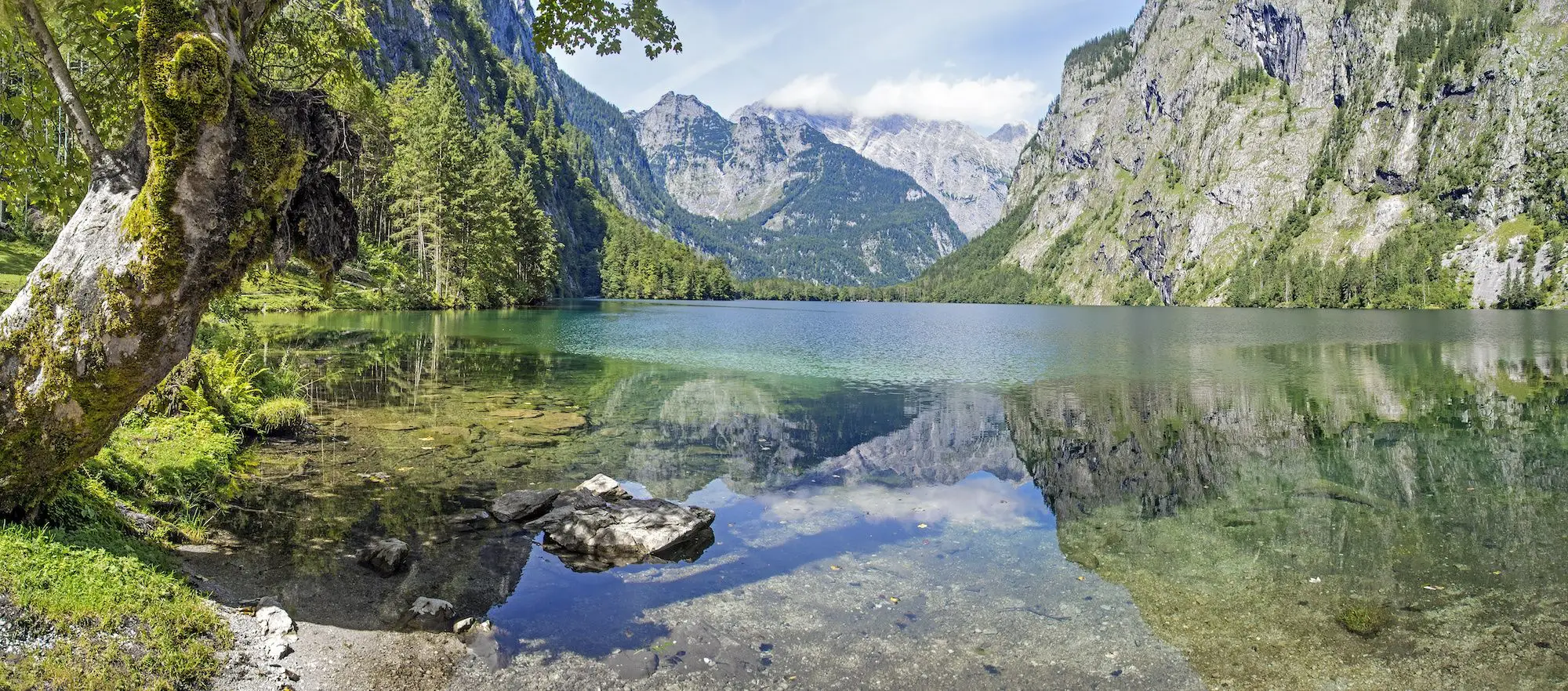
Obersee
 Highlight of Königssee Lake
Highlight of Königssee LakeTake a short hike to this stunning lake nestled within the mountains.
You can take a quick jaunt to the Obersee, or better yet, you can take a 5 miles hike to a waterfall above the lake. The trail is well-maintained and well-traveled, although rocky and steep at times. The hike begins with a fairly flat and easy walk from the boat docks to the Obersee lake. You will then follow a trail along the right shore of the lake. The trail becomes rocky and steep, and you must ascend about 250 feet. At the high points of the trail, you will have a beautiful view of the lake below and surrounding mountains. You will then descend and reach the far end of the lake, where you will enjoy another beautiful view. You will then continue hiking towards the end of the valley, climbing another approximately 350 feet to reach the end of the valley, where you will see the waterfalls. Keep in mind that at the end of summer or in fall the waterfall may not be very impressive.

St Bartholomew's Church
 Highlight of Königssee Lake
Highlight of Königssee LakeHop off the boat for a pleasant and easy walk along the lake shore near this onion-domed church.
To take this easy, flat, but very beautiful hike, from the boat docks, follow the orange signs for the "St. Bartholomä-Rundweg". You will make a circle on a well-maintained trail, first walking along the lakeshore for about half a mile, and then turn left into the forest. Continue following the signs for the Rundweg, taking another left after about 350 yards, and returning to the docks in a little less than half a mile.
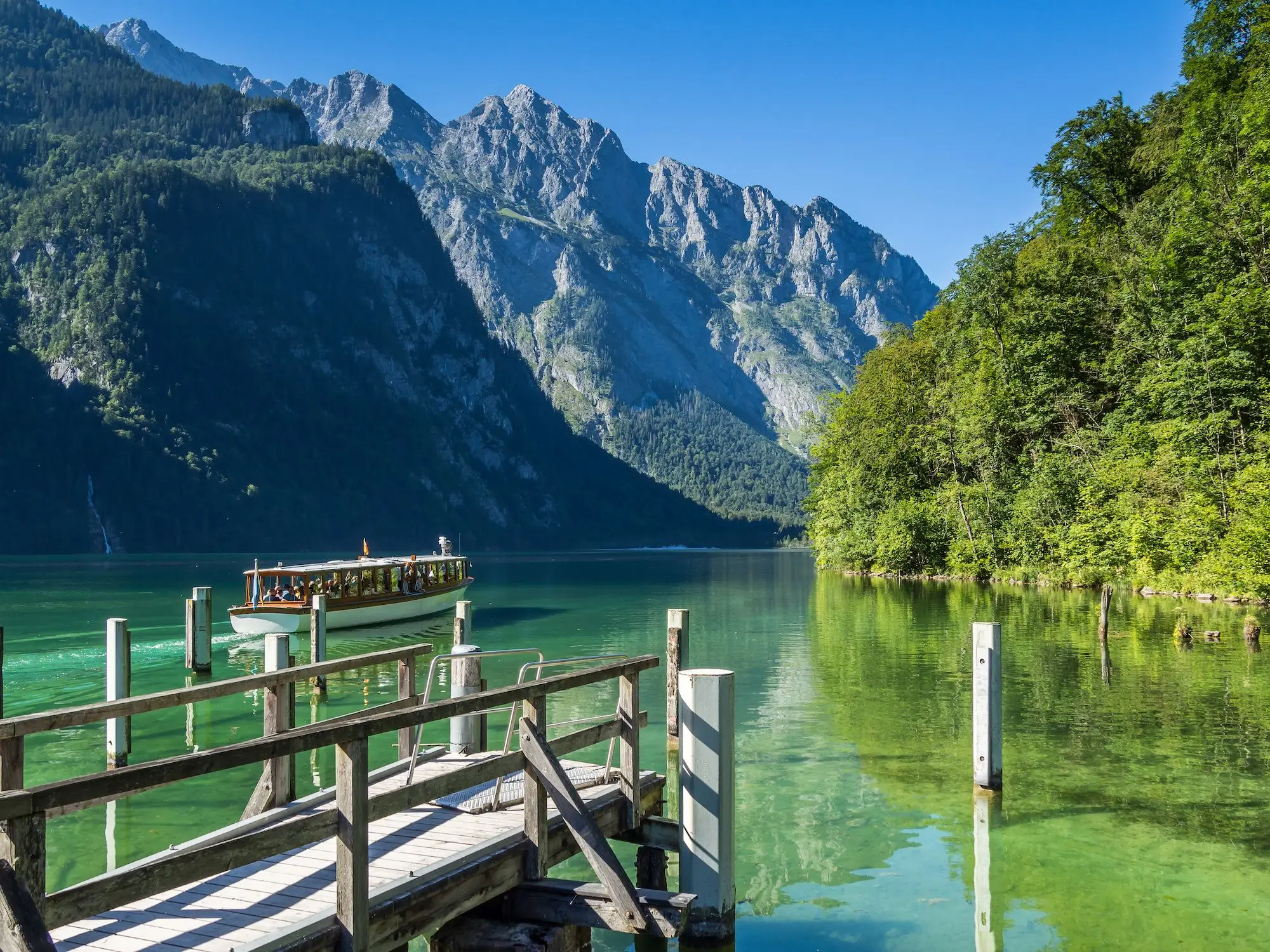
Königssee Cruise
 Highlight of Königssee Lake
Highlight of Königssee LakeRelax on an unforgettable cruise across the lake, hopping on an off when you please.
The cruises are made all the more enjoyable as the electric boats are almost completely quiet. Nothing will distract you for the atmosphere and scenery. Cruises occur all year long unless the lake is iced over. Tickets are sold directly at the docks, although getting there early is highly recommended to avoid long lines.
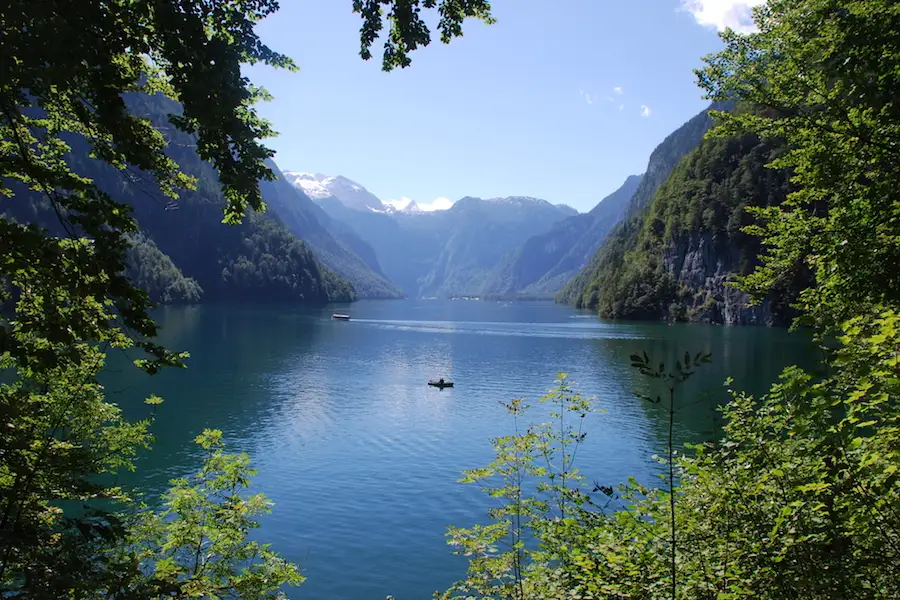
Malerwinkl
 Highlight of Königssee Lake
Highlight of Königssee LakeVenture a little further to find a perfect view of the lake.
The Malerwinkl (i.e. the Painters Angle) is less than a mile walk from the boat docks and offers a picture-frame view of the lake. You can walk down to the water and soak your feet. After enjoying the view, you can head back, or take a strenuous, approximately hour-long hike to the Jennerbahn cable car station. Just follow the signs for the Malerwinkl-Rundweg and the Jennerbahn-Talstation. This is a trail for experienced hikers with proper footwear, which includes a climb of about 400 feet.

Jennerbahn Cable Car
 Highlight of Königssee Lake
Highlight of Königssee LakeTake an exhilarating ride into the Alpine peaks above the lake.
You will enjoy amazing views of the lake and the surrounding Bavarian Alps. If you are up for it, you can even hike in the mountains as well, or ski in the winter. You can board the Jennerbahn cable car near the same parking area and bus stop which services the lake. It costs approx. 27.50 EUR for an adult roundtrip ticket to the top. You can save money by hiking back down, but this is only recommended for experienced hikers with good footwear.

Obersee
 Highlight of Königssee Lake
Highlight of Königssee LakeTake a short hike to this stunning lake nestled within the mountains.
You can take a quick jaunt to the Obersee, or better yet, you can take a 5 miles hike to a waterfall above the lake. The trail is well-maintained and well-traveled, although rocky and steep at times. The hike begins with a fairly flat and easy walk from the boat docks to the Obersee lake. You will then follow a trail along the right shore of the lake. The trail becomes rocky and steep, and you must ascend about 250 feet. At the high points of the trail, you will have a beautiful view of the lake below and surrounding mountains. You will then descend and reach the far end of the lake, where you will enjoy another beautiful view. You will then continue hiking towards the end of the valley, climbing another approximately 350 feet to reach the end of the valley, where you will see the waterfalls. Keep in mind that at the end of summer or in fall the waterfall may not be very impressive.

St Bartholomew's Church
 Highlight of Königssee Lake
Highlight of Königssee LakeHop off the boat for a pleasant and easy walk along the lake shore near this onion-domed church.
To take this easy, flat, but very beautiful hike, from the boat docks, follow the orange signs for the "St. Bartholomä-Rundweg". You will make a circle on a well-maintained trail, first walking along the lakeshore for about half a mile, and then turn left into the forest. Continue following the signs for the Rundweg, taking another left after about 350 yards, and returning to the docks in a little less than half a mile.

Königssee Cruise
 Highlight of Königssee Lake
Highlight of Königssee LakeRelax on an unforgettable cruise across the lake, hopping on an off when you please.
The cruises are made all the more enjoyable as the electric boats are almost completely quiet. Nothing will distract you for the atmosphere and scenery. Cruises occur all year long unless the lake is iced over. Tickets are sold directly at the docks, although getting there early is highly recommended to avoid long lines.

Malerwinkl
 Highlight of Königssee Lake
Highlight of Königssee LakeVenture a little further to find a perfect view of the lake.
The Malerwinkl (i.e. the Painters Angle) is less than a mile walk from the boat docks and offers a picture-frame view of the lake. You can walk down to the water and soak your feet. After enjoying the view, you can head back, or take a strenuous, approximately hour-long hike to the Jennerbahn cable car station. Just follow the signs for the Malerwinkl-Rundweg and the Jennerbahn-Talstation. This is a trail for experienced hikers with proper footwear, which includes a climb of about 400 feet.

Jennerbahn Cable Car
 Highlight of Königssee Lake
Highlight of Königssee LakeTake an exhilarating ride into the Alpine peaks above the lake.
You will enjoy amazing views of the lake and the surrounding Bavarian Alps. If you are up for it, you can even hike in the mountains as well, or ski in the winter. You can board the Jennerbahn cable car near the same parking area and bus stop which services the lake. It costs approx. 27.50 EUR for an adult roundtrip ticket to the top. You can save money by hiking back down, but this is only recommended for experienced hikers with good footwear.

Obersee
 Highlight of Königssee Lake
Highlight of Königssee LakeTake a short hike to this stunning lake nestled within the mountains.
You can take a quick jaunt to the Obersee, or better yet, you can take a 5 miles hike to a waterfall above the lake. The trail is well-maintained and well-traveled, although rocky and steep at times. The hike begins with a fairly flat and easy walk from the boat docks to the Obersee lake. You will then follow a trail along the right shore of the lake. The trail becomes rocky and steep, and you must ascend about 250 feet. At the high points of the trail, you will have a beautiful view of the lake below and surrounding mountains. You will then descend and reach the far end of the lake, where you will enjoy another beautiful view. You will then continue hiking towards the end of the valley, climbing another approximately 350 feet to reach the end of the valley, where you will see the waterfalls. Keep in mind that at the end of summer or in fall the waterfall may not be very impressive.
prev
next

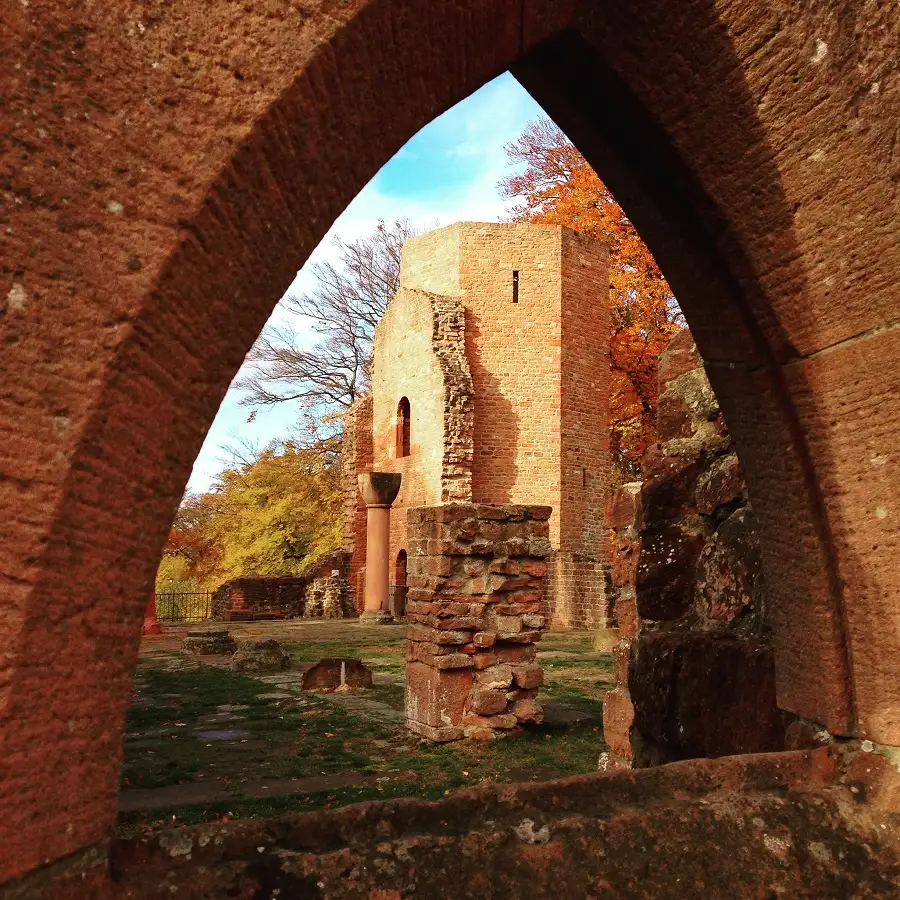
Day 7
Salzburg to Heidelberg
Day 7
Salzburg to Heidelberg





7:00 AM
Transfer to Rail Station
Most trains depart from Salzburg Main Station (Salzburg Hbf) station, the largest station in the city. Before spending money on a transfer, be sure to check whether your hotel is within easy walking distance. Also consider that public transport is the cheapest and sometimes fastest option. If staying at a hotel, they can order a reliable taxi. Some private transfers will even help with your bags. Uber is also available for those with the app.

Day 7
Salzburg to Heidelberg



Day 8
Heidelberg
Day 8
Heidelberg



Morning/Mid-Day
Castle & Königstuhl
Heidelberg has the fortune to have some uniquely atmospheric castle ruins and is home to the oldest yet most modern funicular railway in Germany. Use this funicular to take a trip up Heidelberg Castle and stroll through the castle gardens. Continue up to the top of the hill where you will reach the Königstuhl to experience spectacular views of Heidelberg and the Neckar River valley.

Königstuhl
Ascend to the top of this mountain for a perfect view of the Neckar and Rhine Valleys.
Show More

Bergbahn Funicular
Easily reach the castle by taking the Bergbahn, which happens to simultaneously be both Germany's oldest and newest funicular.
Show More

Heidelberg Castle
Gaze down upon Heidelberg from the battlements of this romantic castle ruin.
Show More

Königstuhl
Ascend to the top of this mountain for a perfect view of the Neckar and Rhine Valleys.
Show More

Bergbahn Funicular
Easily reach the castle by taking the Bergbahn, which happens to simultaneously be both Germany's oldest and newest funicular.
Show More

Heidelberg Castle
Gaze down upon Heidelberg from the battlements of this romantic castle ruin.
Show More

Königstuhl
Ascend to the top of this mountain for a perfect view of the Neckar and Rhine Valleys.
Show More
prev
next

Day 8
Heidelberg


Königstuhl
 Highlight of Castle & Königstuhl
Highlight of Castle & KönigstuhlAscend to the top of this mountain for a perfect view of the Neckar and Rhine Valleys.
The locals are very proud of this peak, easily reached from the top station of the funicular, as its views of Heidelberg and the Neckar River draw crowds.

Bergbahn Funicular
 Highlight of Castle & Königstuhl
Highlight of Castle & KönigstuhlEasily reach the castle by taking the Bergbahn, which happens to simultaneously be both Germany's oldest and newest funicular.
Following a refurbishment in 2005, Germany's oldest funicular railway became it's most modern. The funicular takes you to Heidelberg Castle where you can visit the ruins and stroll through the castle gardens. You can then continue up to the top of the hill where you will reach the Königstuhl to experience spectacular views of Heidelberg and the Neckar River valley. If you prefer, you can always save some money and take a beautiful but somewhat strenuous hike, capturing perfect pictures of the castle as you make your way up the hill.

Heidelberg Castle
 Highlight of Castle & Königstuhl
Highlight of Castle & KönigstuhlGaze down upon Heidelberg from the battlements of this romantic castle ruin.
These ruins are one of the most important Renaissance structures north of the Alps, and the contrast of the deep green forests and the red sandstone building make for a beautiful sight from the city center, though it's a much altered view since 1688, when French troops damaged the city and again in 1693, when they did much worse. This led to a contemporary French writer to muse, "Heidelberger deleta" ("Heidelberg is 'deleted'"). Because of its delapidation, the castle regained stature during the 18th and 19th centuries as a powerful muse for many a Romantic poet. It will inspire you as well.

Königstuhl
 Highlight of Castle & Königstuhl
Highlight of Castle & KönigstuhlAscend to the top of this mountain for a perfect view of the Neckar and Rhine Valleys.
The locals are very proud of this peak, easily reached from the top station of the funicular, as its views of Heidelberg and the Neckar River draw crowds.

Bergbahn Funicular
 Highlight of Castle & Königstuhl
Highlight of Castle & KönigstuhlEasily reach the castle by taking the Bergbahn, which happens to simultaneously be both Germany's oldest and newest funicular.
Following a refurbishment in 2005, Germany's oldest funicular railway became it's most modern. The funicular takes you to Heidelberg Castle where you can visit the ruins and stroll through the castle gardens. You can then continue up to the top of the hill where you will reach the Königstuhl to experience spectacular views of Heidelberg and the Neckar River valley. If you prefer, you can always save some money and take a beautiful but somewhat strenuous hike, capturing perfect pictures of the castle as you make your way up the hill.

Heidelberg Castle
 Highlight of Castle & Königstuhl
Highlight of Castle & KönigstuhlGaze down upon Heidelberg from the battlements of this romantic castle ruin.
These ruins are one of the most important Renaissance structures north of the Alps, and the contrast of the deep green forests and the red sandstone building make for a beautiful sight from the city center, though it's a much altered view since 1688, when French troops damaged the city and again in 1693, when they did much worse. This led to a contemporary French writer to muse, "Heidelberger deleta" ("Heidelberg is 'deleted'"). Because of its delapidation, the castle regained stature during the 18th and 19th centuries as a powerful muse for many a Romantic poet. It will inspire you as well.

Königstuhl
 Highlight of Castle & Königstuhl
Highlight of Castle & KönigstuhlAscend to the top of this mountain for a perfect view of the Neckar and Rhine Valleys.
The locals are very proud of this peak, easily reached from the top station of the funicular, as its views of Heidelberg and the Neckar River draw crowds.
prev
next


Day 9
Heidelberg to Lucerne
Day 9
Heidelberg to Lucerne




9:25 AM
Transfer to Rail Station
Most trains depart from Heidelberg Hbf station, the largest station in the city. Before spending money on a transfer, be sure to check whether your hotel is within easy walking distance. Also consider that public transport is the cheapest and sometimes fastest option, and the local tram network stops directly in front of the station. If staying at a hotel, they can order a reliable taxi. Some private transfers will even help with your bags. Uber is not yet available in Heidelberg.

Day 9
Heidelberg to Lucerne



Day 10
Lucerne
Day 10
Lucerne



9:00 AM - 11:00 AM
Walking Tour of Lucerne
During this 2 hour guided private tour you will take in all the major highlights of Lucerne including: Lion Monument, Chapel Bridge, the Old Town and the Jesuit Church. Your professional guide will tell you about the fascinating history of the town and why Lucerne is a favorite destination for the Swiss and foreign visitors alike. You will also enjoy stunning views around Lake Lucerne, especially of the city's mountain, Mount Pilatus.

Lake Lucerne Boat Docks (Luzern Bahnhofquai)
Show More
Show More


Jesuit Church
One of the most beautiful Baroque buildings in Switzerland
Show More

Lake Lucerne Boat Docks (Luzern Bahnhofquai)
Show More
Show More


Jesuit Church
One of the most beautiful Baroque buildings in Switzerland
Show More

Lake Lucerne Boat Docks (Luzern Bahnhofquai)
Show More
Show More


Jesuit Church
One of the most beautiful Baroque buildings in Switzerland
Show More
prev
next

Day 10
Lucerne


Lake Lucerne Boat Docks (Luzern Bahnhofquai)
 Highlight of Walking Tour of Lucerne
Highlight of Walking Tour of Lucerne

Jesuit Church
 Highlight of Walking Tour of Lucerne
Highlight of Walking Tour of LucerneOne of the most beautiful Baroque buildings in Switzerland
One of the most beautiful Baroque buildings in Switzerland

Lake Lucerne Boat Docks (Luzern Bahnhofquai)
 Highlight of Walking Tour of Lucerne
Highlight of Walking Tour of Lucerne

Jesuit Church
 Highlight of Walking Tour of Lucerne
Highlight of Walking Tour of LucerneOne of the most beautiful Baroque buildings in Switzerland
One of the most beautiful Baroque buildings in Switzerland

Lake Lucerne Boat Docks (Luzern Bahnhofquai)
 Highlight of Walking Tour of Lucerne
Highlight of Walking Tour of Lucerne

Jesuit Church
 Highlight of Walking Tour of Lucerne
Highlight of Walking Tour of LucerneOne of the most beautiful Baroque buildings in Switzerland
One of the most beautiful Baroque buildings in Switzerland
prev
next


Day 11
Lucerne
Day 11
Lucerne

Early Morning to Afternoon
Excursion to Mount Pilatus
Ride the steepest rack-railway in the world at a gradient of nearly 48 percent from Alpnachstad up the giant mountain of Mt Pilatus that looms over the city of Lucerne, or glide up the other side on a gondola from Kriens. The highest point, Tomlishorn, with superlative views of Lake Lucerne, is only 30min on foot from the hotels and restaurants near the top.

Kriens-Pilatus Cable Car Station
Show More
Show More


Kriens-Pilatus Cable Car Station
Show More
Show More


Kriens-Pilatus Cable Car Station
Show More
Show More


Kriens-Pilatus Cable Car Station
Show More
Show More


Kriens-Pilatus Cable Car Station
Show More
Show More

prev
next

Day 11
Lucerne

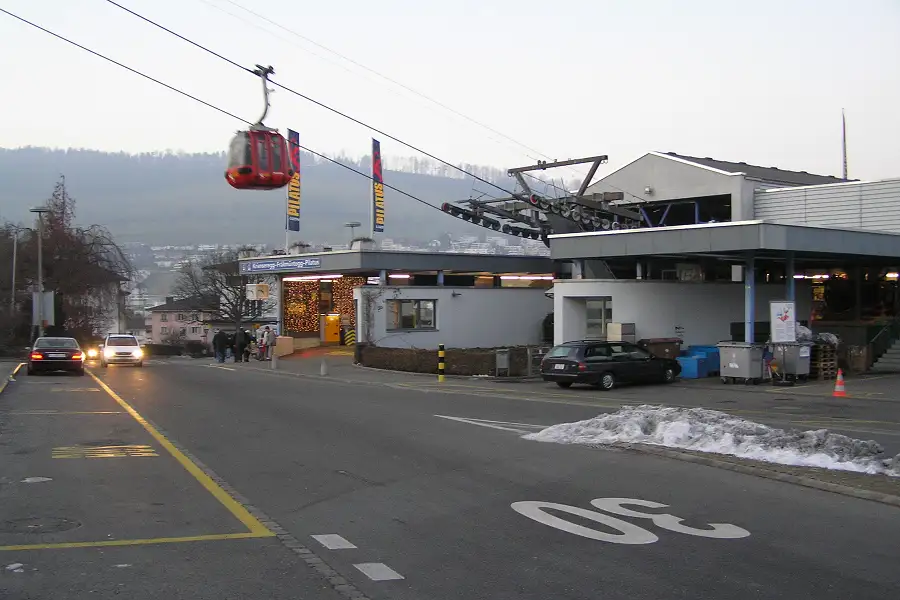
Kriens-Pilatus Cable Car Station
 Highlight of Excursion to Mount Pilatus
Highlight of Excursion to Mount Pilatus

Kriens-Pilatus Cable Car Station
 Highlight of Excursion to Mount Pilatus
Highlight of Excursion to Mount Pilatus

Kriens-Pilatus Cable Car Station
 Highlight of Excursion to Mount Pilatus
Highlight of Excursion to Mount Pilatus

Kriens-Pilatus Cable Car Station
 Highlight of Excursion to Mount Pilatus
Highlight of Excursion to Mount Pilatus

Kriens-Pilatus Cable Car Station
 Highlight of Excursion to Mount Pilatus
Highlight of Excursion to Mount Pilatus
prev
next


Day 12
Depart Lucerne
Day 12
Depart Lucerne

To Be Determined
Rail or Taxi to Zurich Airport
The most affordable way to reach the airport is via train from the Lucerne rail station. In most cases, your itinerary will include a Swiss Travel Pass, which covers the cost of this scenic journey to Zurich Airport, which takes just over 1 hour. If you prefer, you can also take a taxi or book a pre-arranged transfer. The journey by car takes only about 45 minutes. Directions and instructions for either option are included in the Full Itinerary, so you can enjoy a stress-free trip to the airport.

Day 12
Depart Lucerne


What's Included In Austria, Germany & Switzerland Trip

Pre-Paid Tours and Activities:
- Guided Walk through Vienna's Inner City
- Guided Walking Tour of Salzburg
- Guided Walking Tour of the Heidelberg's Altstadt and Castle
- Private Walking Tour of Lucerne

Pre-Paid Transportation:
- 2nd Class Train Tickets from Vienna to Salzburg
- 2nd Class Train Tickets from Salzburg-Heidelberg
- 2nd Class Train Tickets from Heidelberg to Mannheim
- 2nd Class Train Tickets from Mannheim to Basel
- 2nd Class Train Tickets from Basel to Lucerne
- Public Transport Tickets for Vienna

Accommodation:
- 3 nights at a hotel of your choice in Vienna
- 3 nights at a hotel of your choice in Salzburg
- 2 nights at a hotel of your choice in Heidelberg
- 3 nights at a hotel of your choice in Lucerne

Go Real Travel Mobile App:
- Itinerary Plan & Reservations Info
- Points of Interest
- Detailed Travel Information
- Maps & Directions
Other Trips You May Like

10 Days
From$1749USD

10 Days
From$1940USD

7 Days
From$1498USD

14 Days
From$2897USD
14-Day Trip to Historic Munich, Salzburg, Vienna, and Prague

Germany, Austria, Czech Republic

9 Days
From$1598USD

10 Days
From$1749USD
Melodies and Marvels: A 10-Day Musical Journey through Vienna, Salzburg, and Hallstatt

Austria

7 Days
From$1240USD

7 Days
From$1675USD

5 Days
From$868USD

10 Days
From$1749USD

10 Days
From$1940USD

7 Days
From$1498USD

14 Days
From$2897USD
14-Day Trip to Historic Munich, Salzburg, Vienna, and Prague

Germany, Austria, Czech Republic

9 Days
From$1598USD

10 Days
From$1749USD
Melodies and Marvels: A 10-Day Musical Journey through Vienna, Salzburg, and Hallstatt

Austria

7 Days
From$1240USD

7 Days
From$1675USD

5 Days
From$868USD
prev
next
Featured Blogs
prev
next
Our Customers Say It Best
Marianne Strydom, Paarl, South Africa
I just wanted to thank you for organizing an amazing trip for me – I packed in so much in such a short period of time and everything was just perfect. The way you do things makes it possible to really get to know the destination, which for me as a travel agent could not have been better. 

Otto Chuy, Los Angeles, California
I am still surprised how everything worked as planned, without a hitch. All instructions in your itinerary were precise and correct. Your suggestions and comments in each of the locations we went to were very helpful. All your guides, without exception, were wonderful and exactly on time. 

Malini Dutta, Boston, Massachusetts
We can't thank you enough for the detailed plans, maps, and suggestions. It really felt that someone was holding our hands and showing us around. We had all the excitement of discovering foreign lands, with none of the problems that can happen while negotiating unfamiliar places. In fact, all the cities felt like home within a few hours of arriving and exploring. 

Bev and Mark Frankel, Williamsburg, Virginia
We could not be more pleased with Go Real Travel! You took the guess work out of things like public transport but still managed to allow us the freedom to tour as we wanted. Our guides were exceptional and every time I saw a Viking Cruise tour of 25 people, I realized the quality experience we were getting with Go Real. 

Marianne Strydom, Paarl, South Africa
I just wanted to thank you for organizing an amazing trip for me – I packed in so much in such a short period of time and everything was just perfect. The way you do things makes it possible to really get to know the destination, which for me as a travel agent could not have been better. 

Otto Chuy, Los Angeles, California
I am still surprised how everything worked as planned, without a hitch. All instructions in your itinerary were precise and correct. Your suggestions and comments in each of the locations we went to were very helpful. All your guides, without exception, were wonderful and exactly on time. 

Malini Dutta, Boston, Massachusetts
We can't thank you enough for the detailed plans, maps, and suggestions. It really felt that someone was holding our hands and showing us around. We had all the excitement of discovering foreign lands, with none of the problems that can happen while negotiating unfamiliar places. In fact, all the cities felt like home within a few hours of arriving and exploring. 

Bev and Mark Frankel, Williamsburg, Virginia
We could not be more pleased with Go Real Travel! You took the guess work out of things like public transport but still managed to allow us the freedom to tour as we wanted. Our guides were exceptional and every time I saw a Viking Cruise tour of 25 people, I realized the quality experience we were getting with Go Real. 



Explore cities in more detail

Lucerne
Lucerne’s international name may be French, but this spellbinding little city is actually situated in the heart of Switzerland’s German area. Lucerne was one of the first cities to join the Swiss Confederation and is a microcosm of all the typical Swiss quirks and charm that draw visitors to the country from all over the world. The city’s old town is beautifully preserved and also extremely compact. This is a place that is perfect for walking and looking. You’ll soon start to get an in-depth feel for the Old Town after just a few hours. Stroll across the famous Kapellbrücke bridge or the smaller Spreuerbrücke, or wander to the Löwendenkmal, the wounded lion memorial carved from a rock face. Stunning nature surrounds Lucerne, and the landmark Mount Pilatus towers over the city. It’s possible to climb the mountain, where hikers (and cable-car riders) will be rewarded with breathtaking views of the town below and the Alps beyond. Back at ground level, Lake Lucerne calls out for boat trips, which stop at the many villages and parks around the shores.

Learn About Lucerne
Build Lucerne Trip
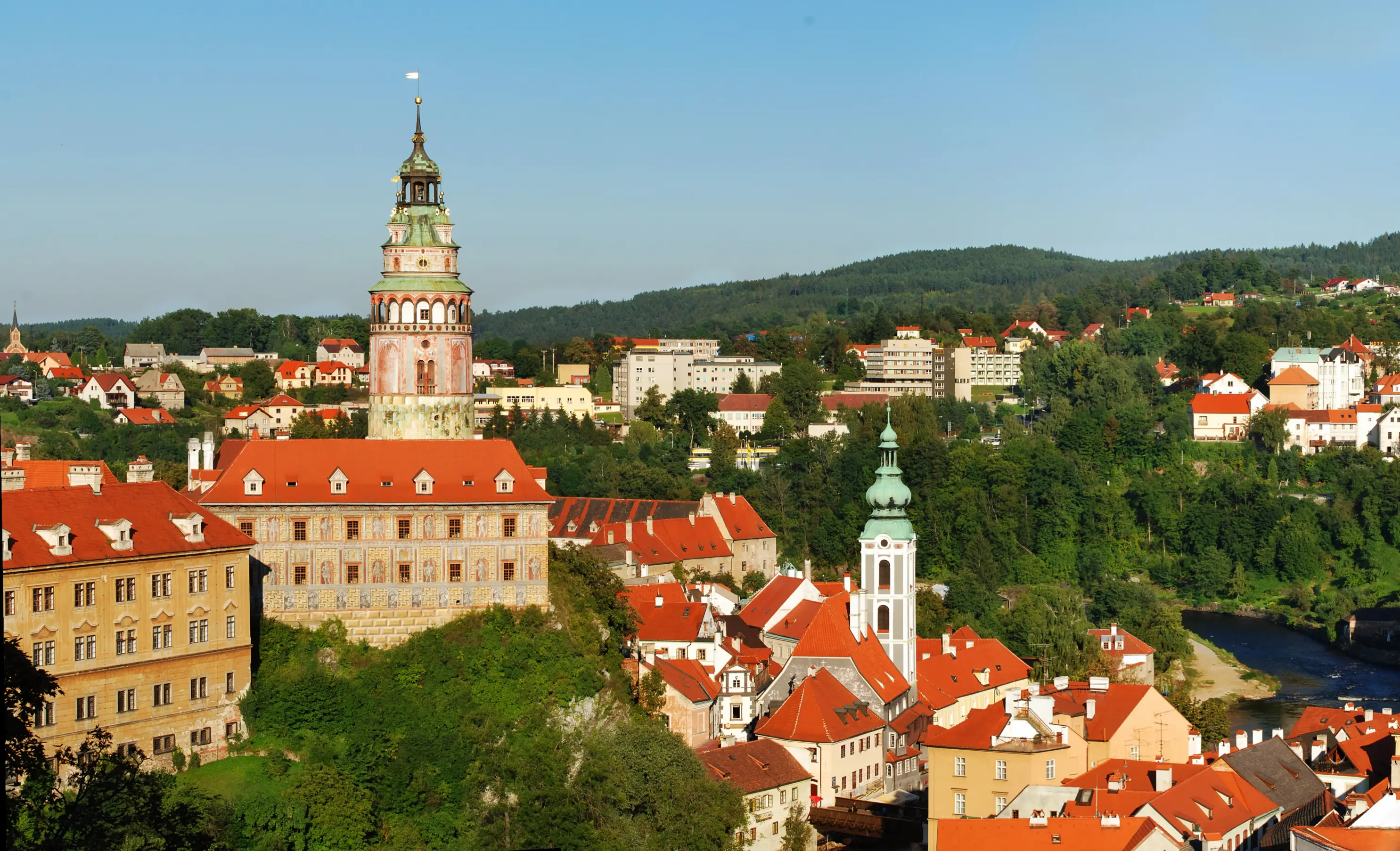
Cesky Krumlov
Cesky Krumlov is a charming little town in South Bohemia. It might be small, but it’s full of whimsical character and mystery. Walking through the narrow streets and across the bridge, the views of the medieval Cesky Krumlov Castle will take your breath away. At night, street musicians serenade visitors on the bridge where you can dance beneath the stars and the watchful eye of the magnificent tower. Dozens of unique local artisan shops, cafes, and restaurants are woven among the winding streets. In the summer, the city is lush with life and greenery. Rafters race down the river, stopping in the center along the way to enjoy a hearty meal before continuing their journey. In the winter, the main square transforms into a magnificent Christmas market and light blankets of snow cover the rooftops. This quaint little town will exceed your expectations and you may never want to leave.

Learn About Cesky Krumlov
Build Cesky Krumlov Trip
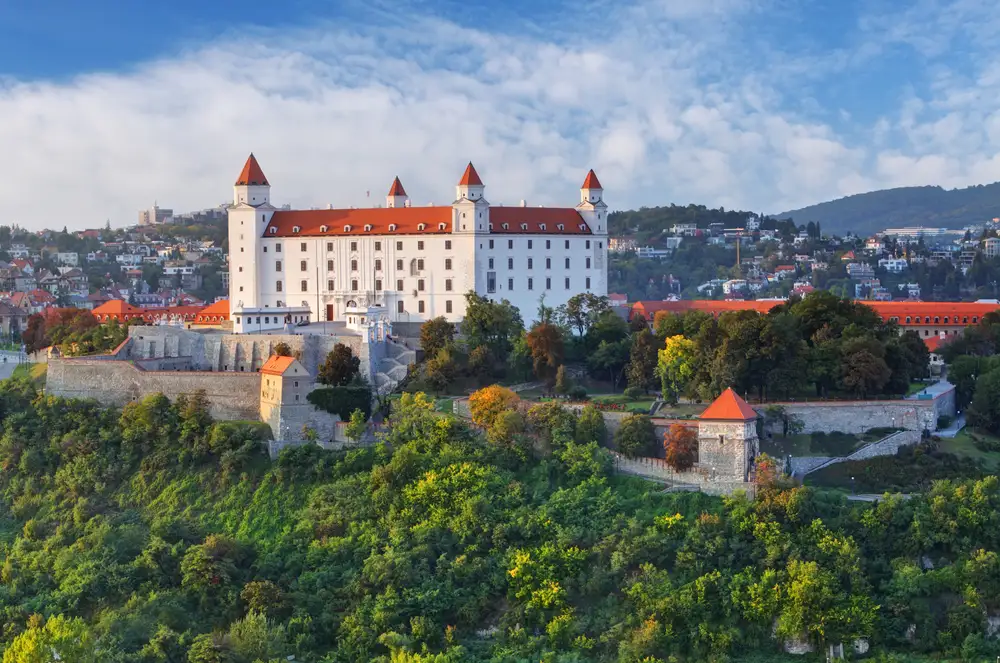
Bratislava
Bratislava is one of the most up-and-coming cities in central Europe. After years in the shadows of the Soviet bloc, and often drowned out by Prague, Bratislava has finally broken out. The Bratislavan region is now one of the richest per capita in the EU. This economic upswing has infused Bratislava with a newfound zeal. Trendy cafes and cool shopping centers are popping up everywhere, and the city’s already happening nightlife scene is only set to get better. Still less crowded than its central European neighbors Prague, Vienna, and Budapest, but just as intriguing, there’s really never been a better time for a visit to Bratislava. Ruled over by the Hungarians, Austrians, and most recently the Soviets, Bratislava is a city of strange contrasts. As soon as you arrive in Bratislava, you’ll see the pastel-hued churches, baroque houses, and the cobbled Old Town Square brush shoulders with modern brutalist buildings, retrofuturistic towers, and the clunky communist built UFO bridge. The city’s oldest building, its castle, is set atop the western edge of the Little Carpathian Hills like a trophy, the city’s hard-won main icon. For the first time in nearly a millennium, Bratislava has now seized control of its own destiny, and it shows.

Learn About Bratislava
Build Bratislava Trip
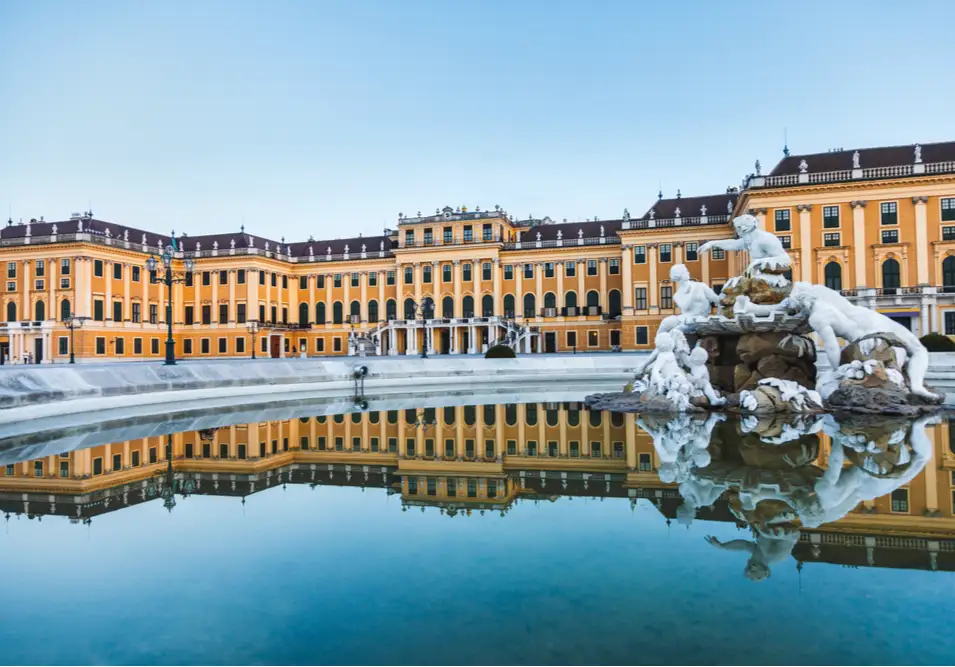
Vienna
Artistic and musical, historical and elegant, Vienna is the definition of class. The seat of the Habsburg monarchy for over six centuries, it's no wonder this city is still fit for royalty. Baroque buildings and imperial palaces dominate the cityscape, while locals stride gracefully through the streets, likely on their way to a classical music concert or art exhibition. Visitors from all over the world flock to Schonbrunn Palace, historical museums, and local eateries for authentic Viennese schnitzel. Vienna is also home to world-class wining and dining. Famous dishes include Wiener schnitzel, Tafelspitz (prime boiled beef), and apfelstrudel (apple strudel), all of which pair well with a glass of fine Austrian wine. No matter how long you spend in Vienna, you'll leave with a new appreciation for the finer things in life.

Learn About Vienna
Build Vienna Trip

Salzburg
You've probably heard this before— the city of Salzburg is straight out of a fairytale. Nestled in the mountains, this romantic city's Baroque architecture with colorful domes and spires is especially striking against the ancient fortress and Austrian Alpine backdrop. If you're looking for an amazing view, climb up to Hohensalzburg Fortress, Central Europe's largest intact fortress, for a jaw-dropping panorama of the city backed by misty mountains. Perhaps most famous for being the birthplace of the renowned composer Wolfgang Amadeus Mozart and the filming location for the classic The Sound of Music, this city has much to offer. Salzburg has become an important artistic and cultural center, featuring magnificent concert halls that uphold the city's tradition of classical music every day of the year, as well as acclaimed art exhibitions and museums. If you do it right, your visit to Salzburg will immerse you in the city's unforgettable atmosphere and keep you coming back for more.

Learn About Salzburg
Build Salzburg Trip

Heidelberg
Heidelberg is buried deep in the forests of southwest Germany. Flanking both sides of the Neckar River, Heidelberg's red and white baroque old town looks like something from a book of folktales. On the hillside above the town, you'll see the looming, tumbledown remains of Heidelberg's Gothic-Renaissance castle, Heidelberger Schloss. The subject of strange local legends, Heidelberg Castle was once home to knights, a famous court jester, and even a witch. It is said the first person who pulls out an iron ring embedded in one of the great doors will be the castle's true owner. Surely on your visit, it's worth a try? Across the river, follow in the footsteps of scholars on a hiking trail known as The Philosophers’ Way. Heidelberg University is the oldest in Germany, and its leafy, temple-like campus contributes to the gentle, contemplative atmosphere of the town. A poetic city with the dreamy feel of a watercolor painting, it's no wonder Heidelberg inspired writers like Mark Twain and Johann Wolfgang von Goethe. The city has even been recognized by UNESCO as a City of Literature. Especially on misty, grey days, Heidelberg has a way of sweeping you up in its romanticism.

Learn About Heidelberg
Build Heidelberg Trip

Lucerne
Lucerne’s international name may be French, but this spellbinding little city is actually situated in the heart of Switzerland’s German area. Lucerne was one of the first cities to join the Swiss Confederation and is a microcosm of all the typical Swiss quirks and charm that draw visitors to the country from all over the world. The city’s old town is beautifully preserved and also extremely compact. This is a place that is perfect for walking and looking. You’ll soon start to get an in-depth feel for the Old Town after just a few hours. Stroll across the famous Kapellbrücke bridge or the smaller Spreuerbrücke, or wander to the Löwendenkmal, the wounded lion memorial carved from a rock face. Stunning nature surrounds Lucerne, and the landmark Mount Pilatus towers over the city. It’s possible to climb the mountain, where hikers (and cable-car riders) will be rewarded with breathtaking views of the town below and the Alps beyond. Back at ground level, Lake Lucerne calls out for boat trips, which stop at the many villages and parks around the shores.

Learn About Lucerne
Build Lucerne Trip

Cesky Krumlov
Cesky Krumlov is a charming little town in South Bohemia. It might be small, but it’s full of whimsical character and mystery. Walking through the narrow streets and across the bridge, the views of the medieval Cesky Krumlov Castle will take your breath away. At night, street musicians serenade visitors on the bridge where you can dance beneath the stars and the watchful eye of the magnificent tower. Dozens of unique local artisan shops, cafes, and restaurants are woven among the winding streets. In the summer, the city is lush with life and greenery. Rafters race down the river, stopping in the center along the way to enjoy a hearty meal before continuing their journey. In the winter, the main square transforms into a magnificent Christmas market and light blankets of snow cover the rooftops. This quaint little town will exceed your expectations and you may never want to leave.

Learn About Cesky Krumlov
Build Cesky Krumlov Trip

Bratislava
Bratislava is one of the most up-and-coming cities in central Europe. After years in the shadows of the Soviet bloc, and often drowned out by Prague, Bratislava has finally broken out. The Bratislavan region is now one of the richest per capita in the EU. This economic upswing has infused Bratislava with a newfound zeal. Trendy cafes and cool shopping centers are popping up everywhere, and the city’s already happening nightlife scene is only set to get better. Still less crowded than its central European neighbors Prague, Vienna, and Budapest, but just as intriguing, there’s really never been a better time for a visit to Bratislava. Ruled over by the Hungarians, Austrians, and most recently the Soviets, Bratislava is a city of strange contrasts. As soon as you arrive in Bratislava, you’ll see the pastel-hued churches, baroque houses, and the cobbled Old Town Square brush shoulders with modern brutalist buildings, retrofuturistic towers, and the clunky communist built UFO bridge. The city’s oldest building, its castle, is set atop the western edge of the Little Carpathian Hills like a trophy, the city’s hard-won main icon. For the first time in nearly a millennium, Bratislava has now seized control of its own destiny, and it shows.

Learn About Bratislava
Build Bratislava Trip

Vienna
Artistic and musical, historical and elegant, Vienna is the definition of class. The seat of the Habsburg monarchy for over six centuries, it's no wonder this city is still fit for royalty. Baroque buildings and imperial palaces dominate the cityscape, while locals stride gracefully through the streets, likely on their way to a classical music concert or art exhibition. Visitors from all over the world flock to Schonbrunn Palace, historical museums, and local eateries for authentic Viennese schnitzel. Vienna is also home to world-class wining and dining. Famous dishes include Wiener schnitzel, Tafelspitz (prime boiled beef), and apfelstrudel (apple strudel), all of which pair well with a glass of fine Austrian wine. No matter how long you spend in Vienna, you'll leave with a new appreciation for the finer things in life.

Learn About Vienna
Build Vienna Trip

Salzburg
You've probably heard this before— the city of Salzburg is straight out of a fairytale. Nestled in the mountains, this romantic city's Baroque architecture with colorful domes and spires is especially striking against the ancient fortress and Austrian Alpine backdrop. If you're looking for an amazing view, climb up to Hohensalzburg Fortress, Central Europe's largest intact fortress, for a jaw-dropping panorama of the city backed by misty mountains. Perhaps most famous for being the birthplace of the renowned composer Wolfgang Amadeus Mozart and the filming location for the classic The Sound of Music, this city has much to offer. Salzburg has become an important artistic and cultural center, featuring magnificent concert halls that uphold the city's tradition of classical music every day of the year, as well as acclaimed art exhibitions and museums. If you do it right, your visit to Salzburg will immerse you in the city's unforgettable atmosphere and keep you coming back for more.

Learn About Salzburg
Build Salzburg Trip

Heidelberg
Heidelberg is buried deep in the forests of southwest Germany. Flanking both sides of the Neckar River, Heidelberg's red and white baroque old town looks like something from a book of folktales. On the hillside above the town, you'll see the looming, tumbledown remains of Heidelberg's Gothic-Renaissance castle, Heidelberger Schloss. The subject of strange local legends, Heidelberg Castle was once home to knights, a famous court jester, and even a witch. It is said the first person who pulls out an iron ring embedded in one of the great doors will be the castle's true owner. Surely on your visit, it's worth a try? Across the river, follow in the footsteps of scholars on a hiking trail known as The Philosophers’ Way. Heidelberg University is the oldest in Germany, and its leafy, temple-like campus contributes to the gentle, contemplative atmosphere of the town. A poetic city with the dreamy feel of a watercolor painting, it's no wonder Heidelberg inspired writers like Mark Twain and Johann Wolfgang von Goethe. The city has even been recognized by UNESCO as a City of Literature. Especially on misty, grey days, Heidelberg has a way of sweeping you up in its romanticism.

Learn About Heidelberg
Build Heidelberg Trip
prev
next


 Map of Your Itinerary Route
Map of Your Itinerary Route
Zoom In to the cities to see your itinerary in more detail


 4.8
4.8 






